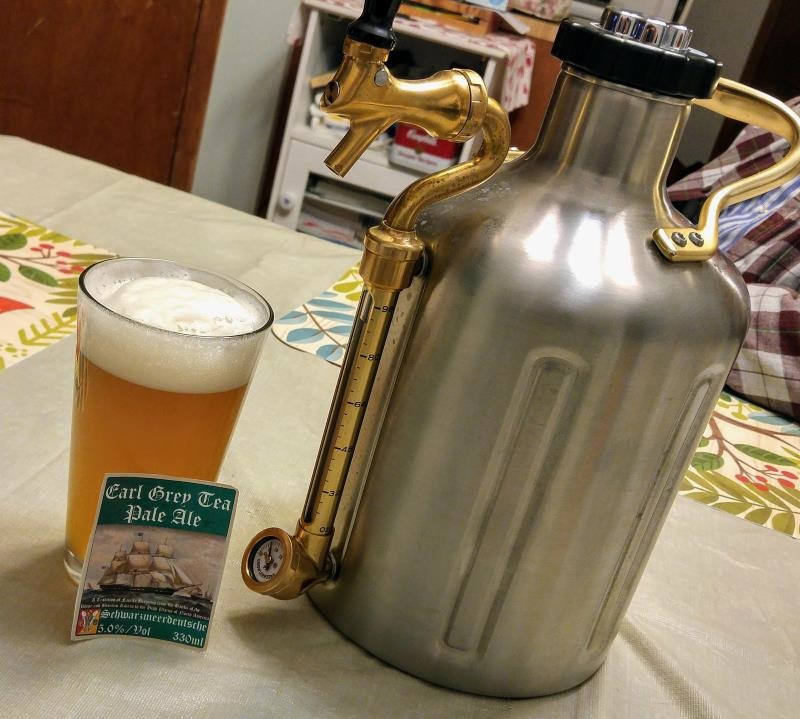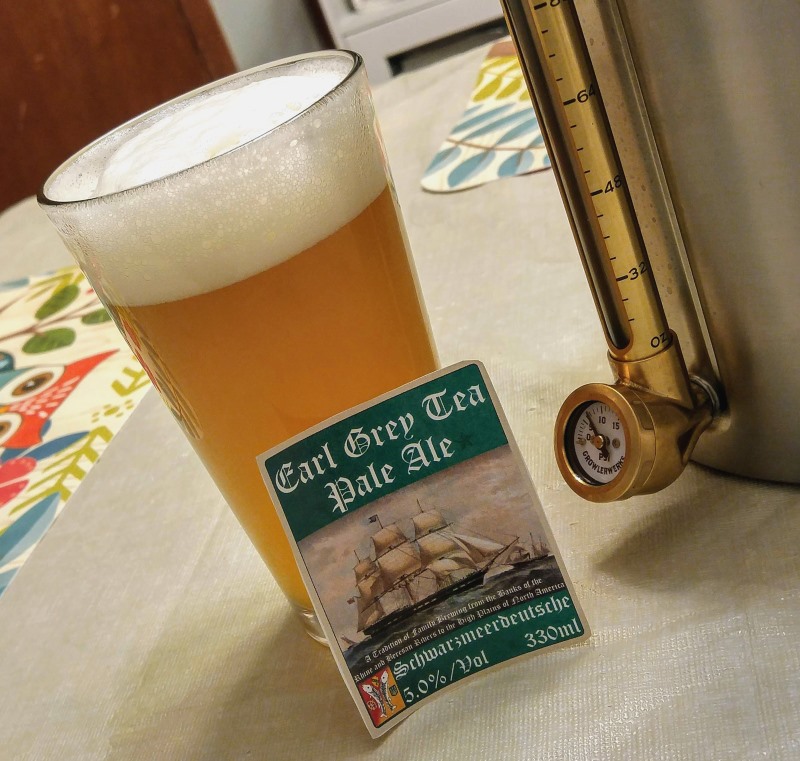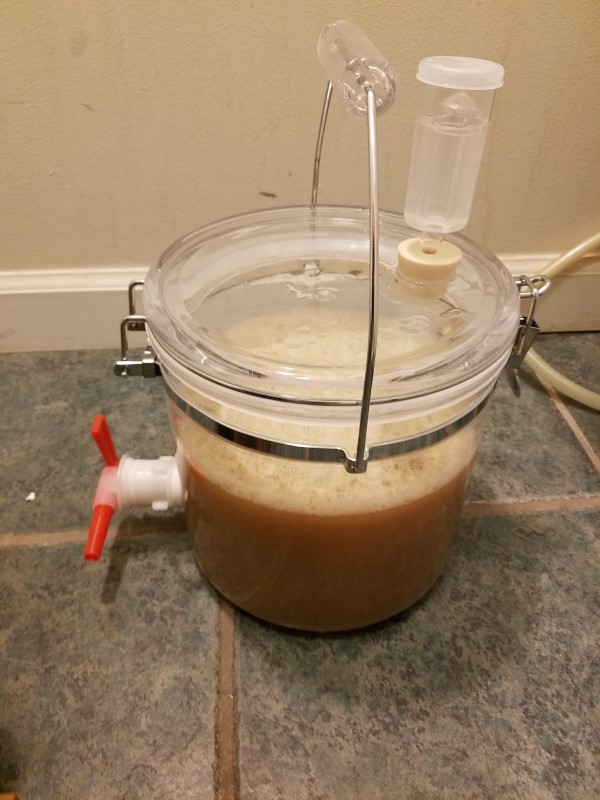TasunkaWitko
Well-Known Member
Well, I am pretty impressed with this uKeg, from Growlerwerks, and with my latest 1-gallon brew: an Earl Grey Tea Pale Ale.
Three days after kegging the beer, it was ready to pour. I got a little more foam than I expected, and the beer was a little bit hazier than I expected; however, I am 95% sure that this was due to the fact that I drove 3 miles on a bumpy road before trying it, and also because I am pretty sure one of my sons loosened the pressure cap while it was carbonating. I'll know more about this next time.
In any case, the beer looked great:

The colour, even with the unexpected haziness, was absolutely beautiful. The aroma was very nice, with a balance of the malts and the nugget hops that I really liked, with a nice, light, citrusy kick from the bergamot in the tea that went well with the woodiness of the Nugget hops.
The mouthfeel was smooth and full-bodied, kind of addictive in a way that I really liked. The taste of the beer reflected the aroma, with a prominent (but not over-whelming) maltiness balanced by a delightful freshness from the hops and tea. Regretfully, I do not know the grain bill for this American Pale Ale, but Brooklyn Brew Shop nailed it. If I can come close to duplicating it in future brews, I would be very happy. The tea itself was represented very well, and I am convinced that two bags for the gallon as just right. It did not over-power but was definitely noticeable - and complimented the entire beer nicely.
The finish was just a touch more "resiny" (resinous?) than I would prefer, but not by very much. I suspect that most people who enjoy an American Pale Ale would find this to be just about right, or possibly even a little on the light side where that quality is concerned.
Above all, the beer tasted both fresh and refreshing, with no "green" qualities that I could detect in the slightest. This was a true winner!

In summary, I really enjoyed this, and so did my father. The keg made a nice conversation piece and convenient delivery method while we played cribbage that evening. We drank a little more than half the gallon in the one sitting, and I suspect that we'll finish it off before this coming weekend is out.
Three days after kegging the beer, it was ready to pour. I got a little more foam than I expected, and the beer was a little bit hazier than I expected; however, I am 95% sure that this was due to the fact that I drove 3 miles on a bumpy road before trying it, and also because I am pretty sure one of my sons loosened the pressure cap while it was carbonating. I'll know more about this next time.
In any case, the beer looked great:

The colour, even with the unexpected haziness, was absolutely beautiful. The aroma was very nice, with a balance of the malts and the nugget hops that I really liked, with a nice, light, citrusy kick from the bergamot in the tea that went well with the woodiness of the Nugget hops.
The mouthfeel was smooth and full-bodied, kind of addictive in a way that I really liked. The taste of the beer reflected the aroma, with a prominent (but not over-whelming) maltiness balanced by a delightful freshness from the hops and tea. Regretfully, I do not know the grain bill for this American Pale Ale, but Brooklyn Brew Shop nailed it. If I can come close to duplicating it in future brews, I would be very happy. The tea itself was represented very well, and I am convinced that two bags for the gallon as just right. It did not over-power but was definitely noticeable - and complimented the entire beer nicely.
The finish was just a touch more "resiny" (resinous?) than I would prefer, but not by very much. I suspect that most people who enjoy an American Pale Ale would find this to be just about right, or possibly even a little on the light side where that quality is concerned.
Above all, the beer tasted both fresh and refreshing, with no "green" qualities that I could detect in the slightest. This was a true winner!

In summary, I really enjoyed this, and so did my father. The keg made a nice conversation piece and convenient delivery method while we played cribbage that evening. We drank a little more than half the gallon in the one sitting, and I suspect that we'll finish it off before this coming weekend is out.


























































